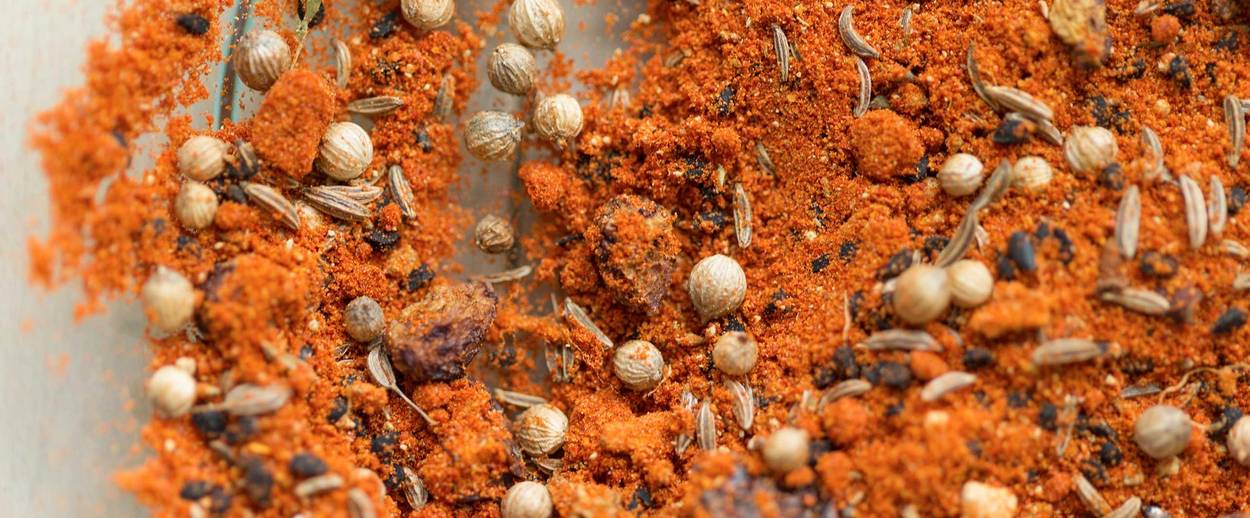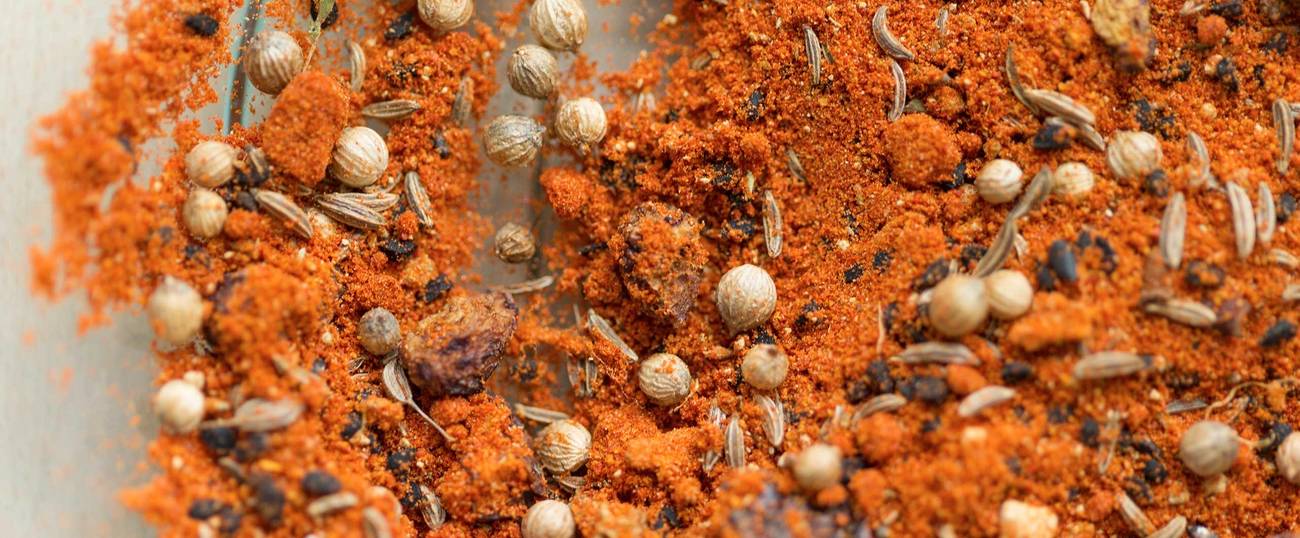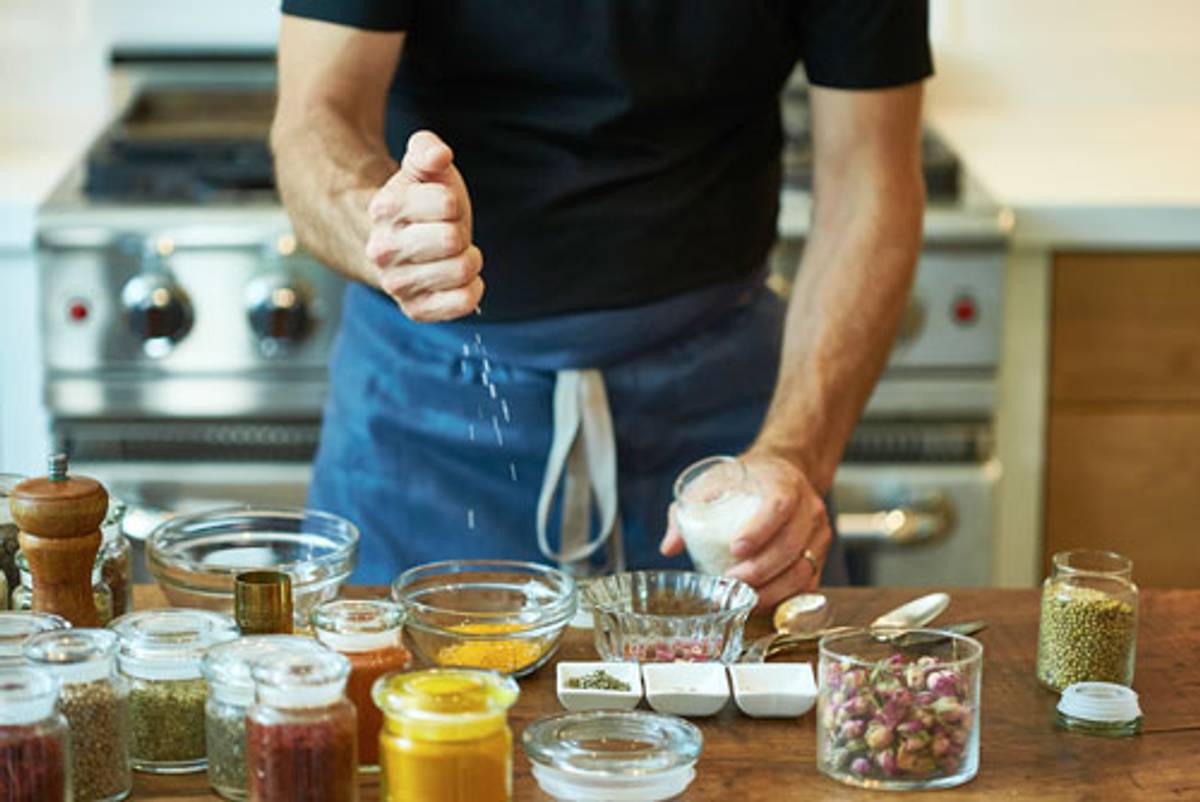The Wide World of Jewish Spices
There’s more to life than garlic powder. Jewish cooks around the globe use a variety of flavors to make their food distinctive. Here’s your primer, from A to Z.




Jews and spices go way back. Aromatic barks, resins, and incense have been used since ancient times and feature heavily in the Torah’s depiction of both tabernacle and temple rituals. Fragrant spices have long been regarded within the tradition as purifying and sacred; they remain central to the observance of Havdalah (the ceremony that marks the end of Shabbat), and the preparation of charoset on Passover. Meanwhile, Jewish traders have been linked to the spice trade for centuries, from the Radhanites who managed trade routes along the Silk Road and beyond during the Middle Ages to the Sephardi merchants who helped drive the Dutch spice trade.
Today, Lior Lev Sercarz, an Israeli-born, New York-based spice blender who has worked with some of the country’s best chefs, carries on this storied tradition. Through his company La Boîte, Sercarz has become a giant in the world of tiny fragrant things. His whimsical, carefully sourced spice blends—with combinations like sumac, rose, and sesame; or green chilies, parsley, and coriander—draw inspiration from around the globe, and redefine what it means to flavor food from the inside out.

Not surprisingly, then, Sercarz has some solid opinions about the way home cooks today relate to their pantry. Spices, he said, should not be an afterthought, but given the same careful consideration as produce. “You don’t buy 50 pounds of lettuce at a time, so why are you buying tremendous amounts of spices that you will never use before they go stale?” he said. He also encourages people to regard spices as a crucial building block of flavor rather than something to haphazardly dust over food like sprinkles on cake. Spices deepen and bloom in the presence of oil and heat, and can penetrate a dish’s other ingredients more fully if they are applied early on in a recipe. “I tell people to season at all stages of food preparation,” he said. “You can’t just wait until the end and hope for the best.”
When it comes to Jewish cooking, Sercarz encourages cooks to stretch beyond their comfort zones. Sephardi and Middle Eastern Jewish culinary traditions maintain a robust relationship with spices and chilies, adding everything from coriander and cumin to ink-black nigella seeds and rose petals to their dishes. Ashkenazi cooking, meanwhile, notoriously sticks to a few favorites. Eastern and Central European cooking “doesn’t have a culture of blending in the same way,” Sercarz said. “Sometimes you see people will have all these spices for their Havdalah spice box, but then they don’t cook with them!”
No matter where one’s family hails from, Sercarz said there is always room to play. “Even if you are making a traditional matzo ball soup or gefilte fish, it is OK to give it a modern twist,” he said. “Spices can change the whole dynamic of a recipe in seconds.”
Thanks to Sercarz and other companies, like NY Shuk, exploring the diverse palate of global Jewish spices—from Ashkenazi-approved dill, poppy, and caraway seeds, to the complex spice blends found throughout Sephardi and Middle Eastern cuisine—is increasingly possible. To that end, here is a non-exhaustive guide to the global Jewish spice pantry. “Keep spices as a part of your regular shopping list,” Sercarz said. “You do not have to have 50 different spices on hand all at once. Find a few that you really like and experiment.”
A Global Jewish Spice Primer
Advieh
Persian Jewish cooks turn to a blend of cinnamon, cardamom, and dried rose petals to flavor dishes both savory (like pilafs and stews) and sweet (like rice pudding and charoset). Some variations also include ginger, while others incorporate more traditionally savory spices like cumin and coriander.
Baharat
Used throughout the Middle East, baharat is a catchall spice blend that varies widely from region to region, and from kitchen to kitchen. It typically includes some combination of cumin, black peppercorns, coriander, cinnamon, and ginger. Other spices (everything from cloves and mint to sumac) are then added to enliven and personalize the blend. Baharat is typically used as a rub or mix-in for meat, fish, and chicken dishes, and is also a wonderful flavor enhancer for rice and hearty soups.
Berbere
Ethiopian cooking can be quite fiery, thanks to a blend of very hot African bird’s-eye chilies and other flavorful spices. The additional spices range widely, but often include other chilies, cardamom, coriander, cumin, cinnamon, fenugreek, turmeric, and cloves. Berbere is added to many stews (called wots), both meat-based and vegetarian.
Caraway
This floral, slightly bitter spice is perhaps best known for the role it plays in flavoring rye bread. In America, as Jewish-style ryes began to rely on higher percentages of wheat flour, caraway became the dominant flavor. But caraway, which is a close relative of parsley, has other traditional uses in Ashkenazi cuisine, primarily as a mix-in for sauerkraut and braised cabbage, soups, potato dishes, and noodles.
Dill
Many iconic Ashkenazi dishes, from chicken soup and cucumber pickles to dumplings and salmon patties, are flavored with dill. Often, cooks turn to the verdant fresh version, but robustly-flavored dried dill seed is also liberally used.
Dukkah
According to Gil Marks’s Encyclopedia of Jewish Food, this Egyptian spice blend gets its name from the Arabic word meaning “to pound.” The foundation of ground, toasted nuts (often hazelnuts, peanuts, or pistachios) and sesame seeds separates this mix from others. The nuts are typically paired with some combination of fragrant spices like cumin, coriander, nigella seeds, and mint. Dukkah can be used as a nutty coating for fish or a topping for eggs but is most often served alongside olive oil as a dip for bread or pita.
Harissa
Tunisian and Moroccan home cooks add fiery heat and vibrant flavor to a wide variety of tagines, couscous dishes, and stews with harissa. It comes in two forms, a wet paste and a dry spice blend, with chiles and garlic serving as the foundation of both. Cumin, coriander, and paprika are common mix-ins.
Hawaij (savory)
Yemenite Jews rely on this blend of turmeric, cumin, cardamom, and black peppercorns to flavor a wide variety of dishes including grilled chicken, fish, lamb, and beef. The classic Yemenite chicken or beef soup, marak temani, is also flavored (and colored golden, thanks to the turmeric) with savory hawaij.
Hawaij (coffee)
In Yemen, coffee also gets the hawaij treatment, though the blend is distinctly sweeter than the soup version. It typically combines cinnamon, ginger, cloves, cardamom, and sometimes turmeric and black peppercorns. A pinch added to coffee grounds perfumes the entire pot.
Paprika
Hungarian Jewish cooking gets its distinctive earthy flavor and rosy color from paprika. From goulash and paprikash to cholent and roast chicken, it is hard to imagine a traditional Ashkenazi Shabbat table without the bright red, finely ground capsicum.
Poppy seeds
Called mohn in German and Yiddish, nutty, blue-black poppy seeds are ubiquitous in Central European baked goods, from sweet rolls and cakes to strudel and hamantaschen. The oily seeds are also ground and mixed with egg noodles—served either sweet with sugar, or savory with sautéed cabbage.
Ras el Hanout
Literally translating to “top of the shop,” this complex Moroccan mix traditionally blends the best-quality spices a merchant has to offer. The recipe varies widely depending on who is making it but tends to include at least a dozen (and often many more) distinct spices including ginger, cardamom, cumin, fennel, coriander, cinnamon, star anise, peppercorns, and turmeric. It is typically used for special occasions, flavoring tagines and couscous dishes, or as a rub for meat.
Za’atar
The name za’atar refers to both a fresh herb (wild hyssop) and a tart, earthy spice blend made with the dried herb, as well as sumac, sesame seeds, and salt. Both the herb and the spice are popular in Arabic cooking—a practice that modern Israelis have emulated. The spice blend is sprinkled onto salads, hummus, flatbread, and used as a dry rub for fish, chicken, and meat dishes.